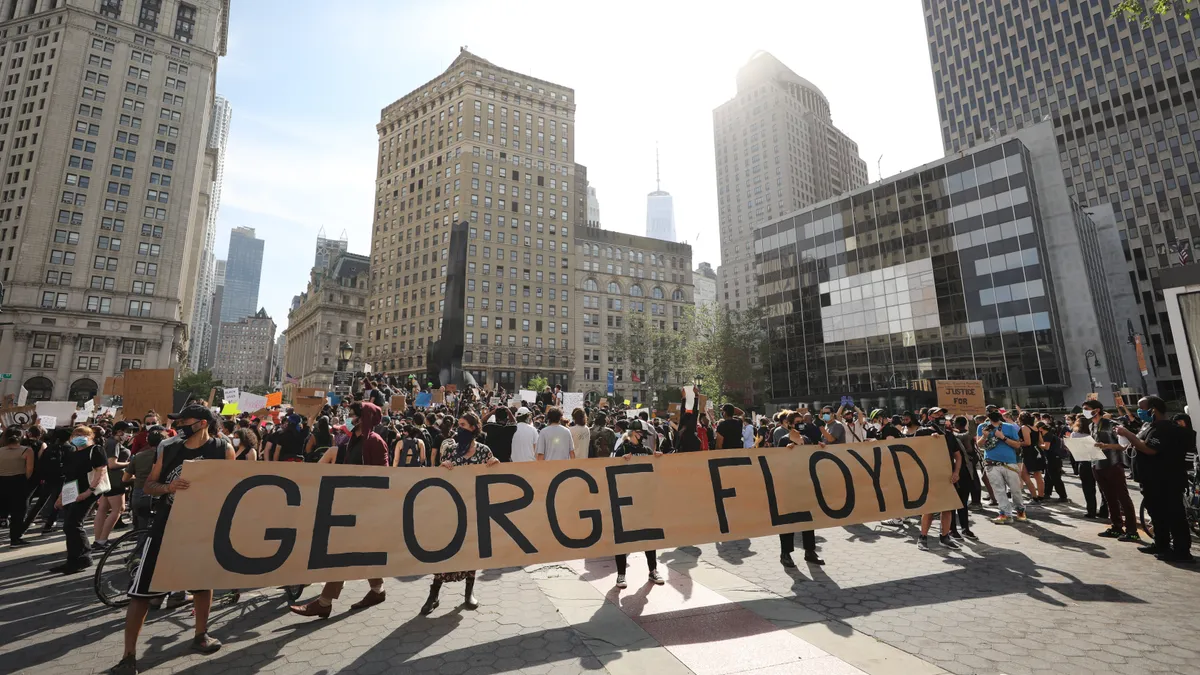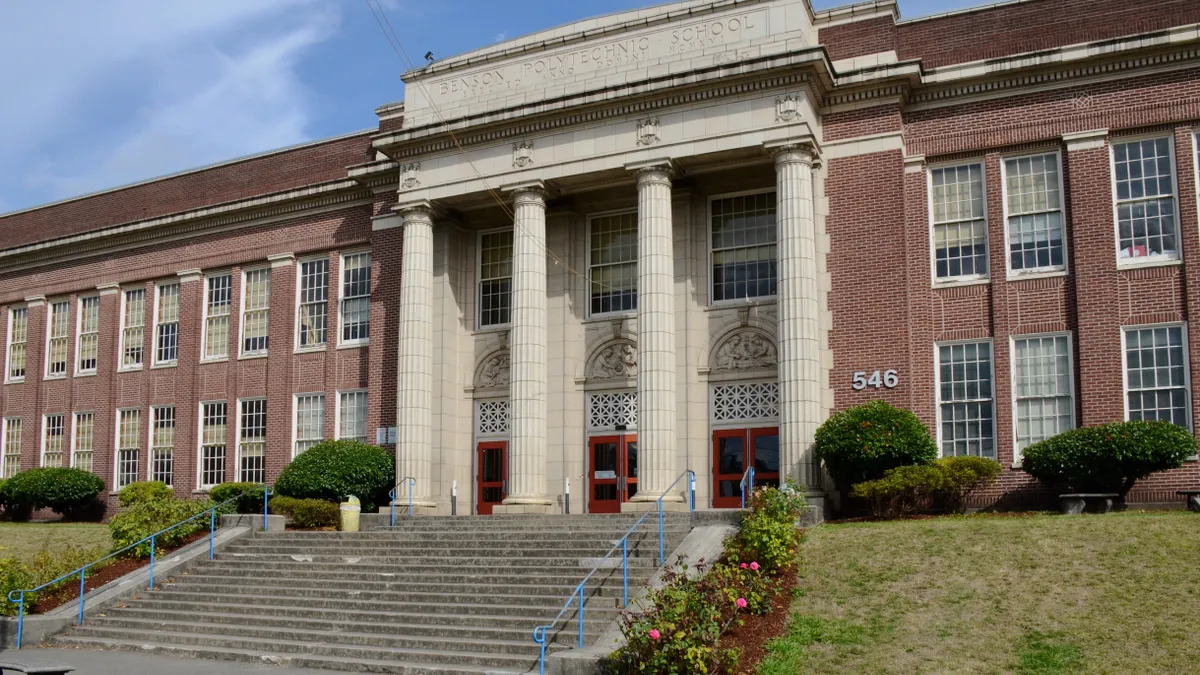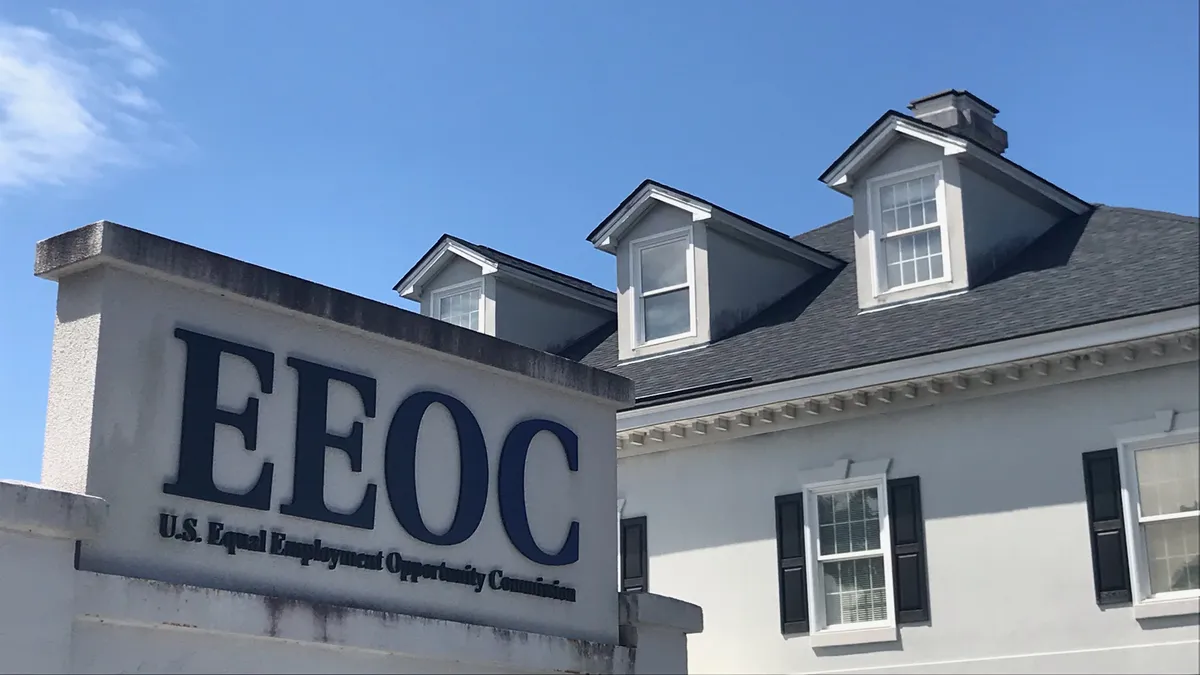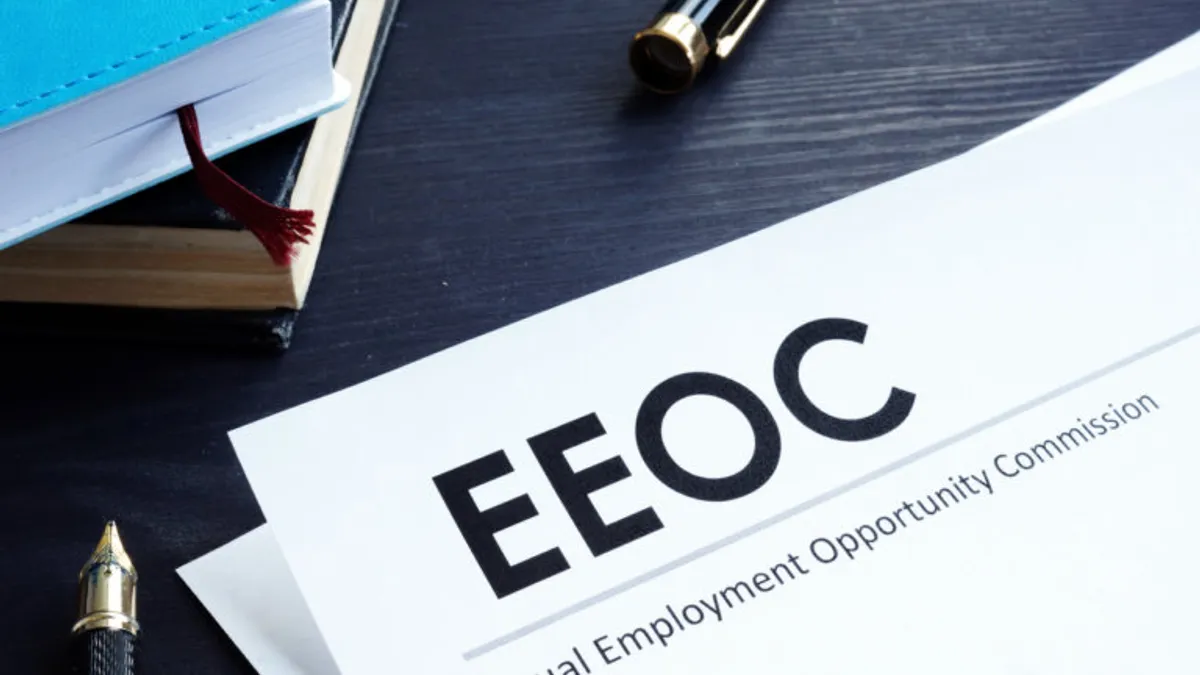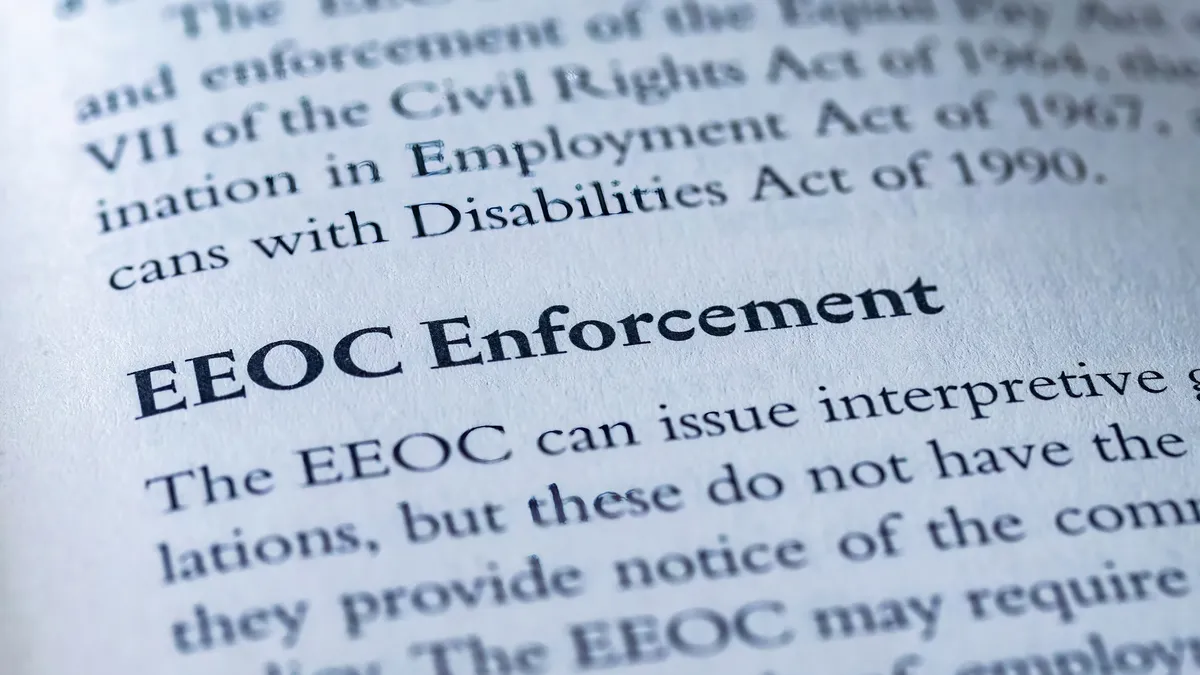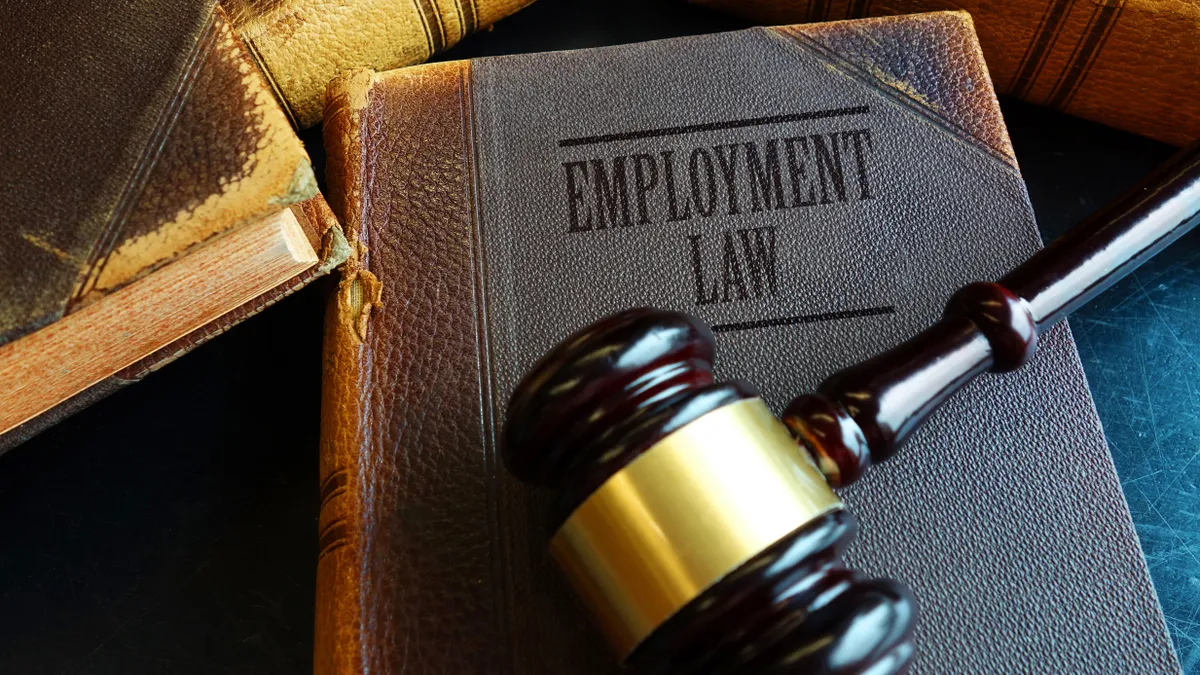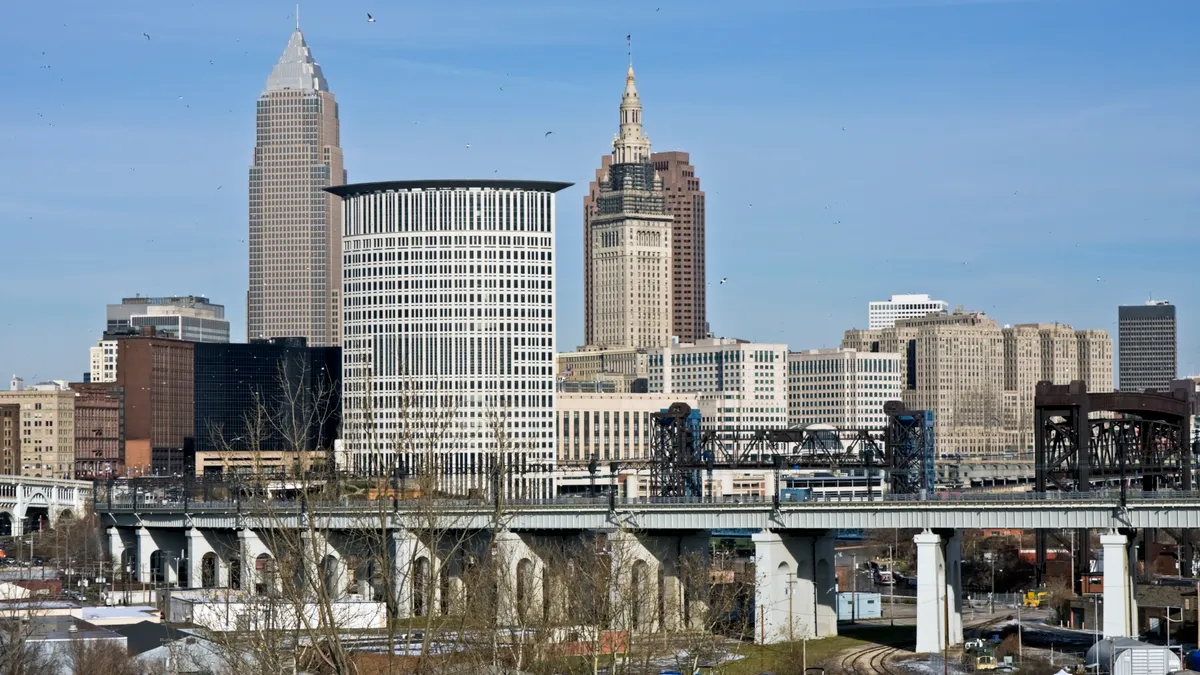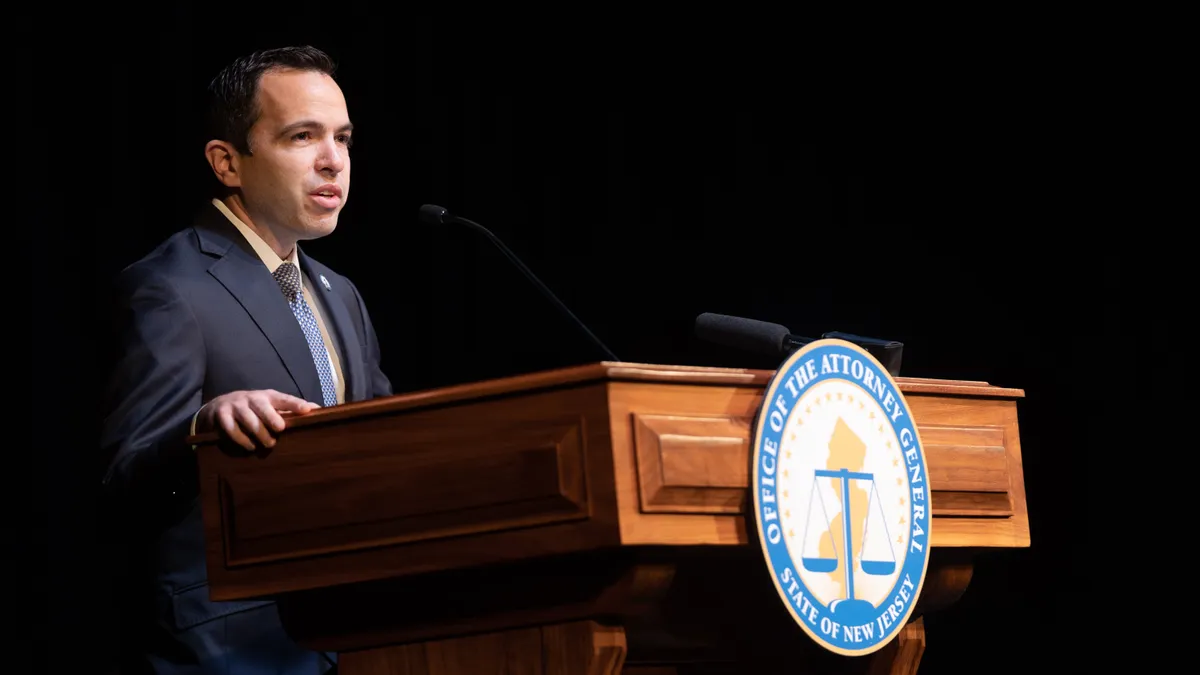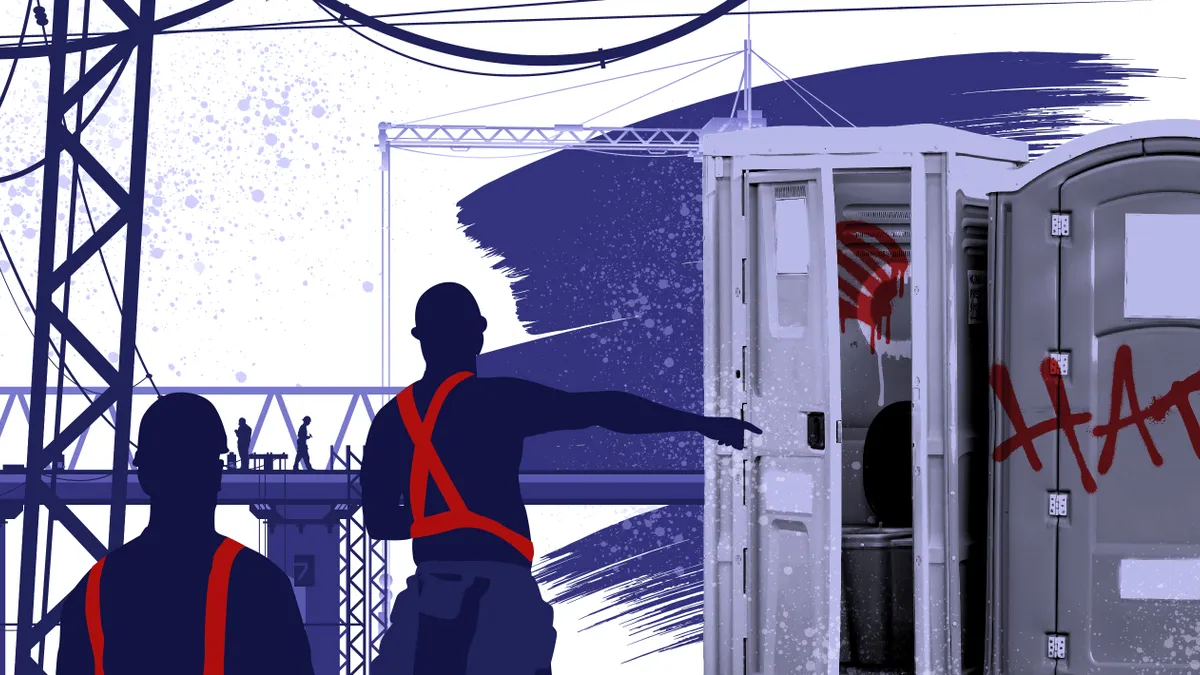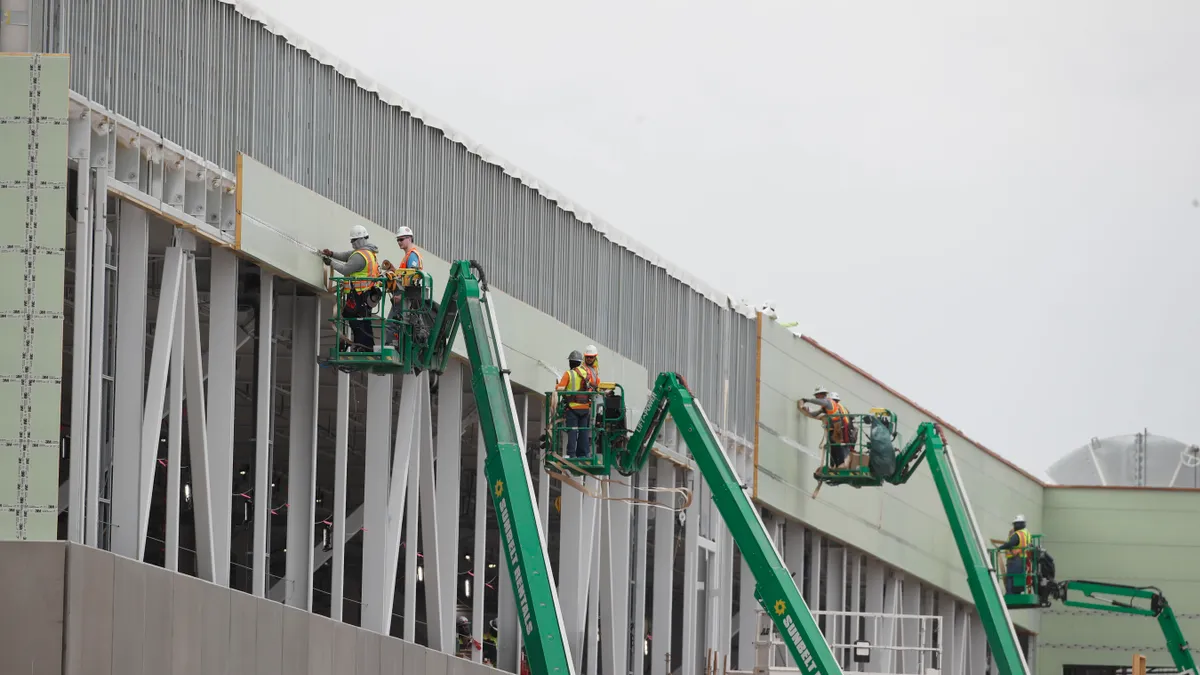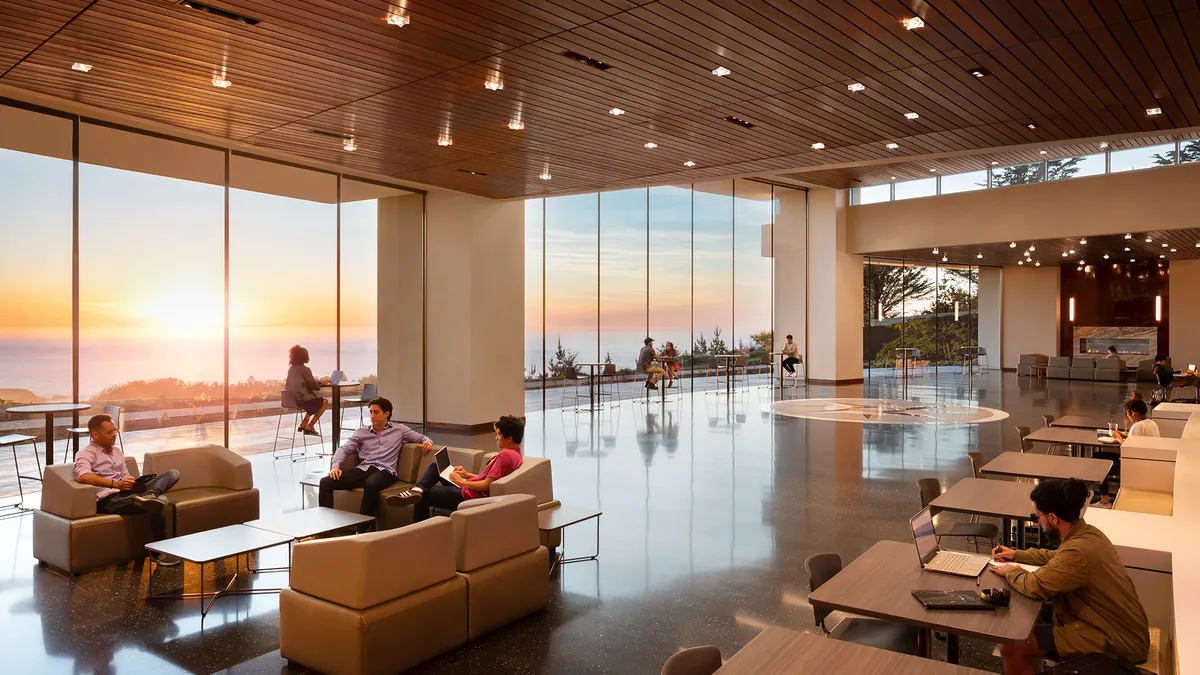Construction Dive has chronicled discrimination against minorities on jobsites since Minneapolis Police Officer Derek Chauvin suffocated George Floyd under his knee two years ago this week.
After spiking in 2020, the number of nooses reported on U.S. construction sites fell by about half, to seven. But that's the same number as 2018 and 2019.
The same number as before Turner CEO Peter Davoren expressed disgust at the “ugliness” he saw, and urged employees to have the courage “to trust each other to make sweeping changes.”
The same number as before Mortenson CEO Dan Johnson joined 30 Minnesota business leaders who said they were “horrified” by what happened on their doorstep.
The same number as before Chicago-based CMA Construction President and Community Development Commissioner Cornelius Griggs, who's African American, called on employees and businesses to take a stand against racism, writing, “This is a conversation that we can no longer avoid.”
So what has changed in the past two years in construction, where 88% of workers are White and 6% are Black compared to 12% in the general workforce?
For this article, Construction Dive asked CEOs how they were delivering on their promises to promote equality and end discrimination and hate crimes on jobsites. We also interviewed minority contractors and frontline workers. Our findings showed slow and nuanced progress.
“For me it’s kind of gotten better, because I’m working with people who at least aren’t openly racist,” said Kadance Jimenez, a Mexican-American journeywoman carpenter who once found a swastika scrawled on a piece of drywall she was asked to throw out.
And she’s quick to say companies need to do more. On smaller jobsites, for example, she’s more likely to see suicide prevention signs. The suicide rate for men in construction is nearly double other professions.
But Jimenez questions whether efforts to bring that rate down are merely treating the symptom, not the disease.
“They’re not addressing the root cause of some suicides, which is people being harassed on the jobsite,” Jimenez said.
Nooses, hate on jobsites
In the months following Floyd's murder and a related wave of social protests, hate-motivated episodes at construction sites gained increased attention. Construction Dive documented more than 20 bias-motivated events, including nooses and racist graffiti across North America in 2020. (Read our award-winning series on racism in construction here.)
Construction leaders tried to confront the issue.
For example, in summer 2020, hundreds of construction companies backed the Associated General Contractors’ Culture of Care campaign, pledging to make jobsites free from harassment, hazing and bullying. Today, 720 companies have signed on, less than 3% of AGC’s 27,000 members.
By fall of 2021, six major contractors, including Turner, Mortenson and Gilbane, launched the inaugural Construction Inclusion Week to combat hate in the industry. More than 1,000 firms participated.
Yet, hate crimes continued to grab global headlines, including a high-profile case last year, where several nooses were found at an Amazon warehouse construction site in Connecticut.
While reports of incidents slowed last winter, in March, an employee at a subcontractor admitted hanging a noose at a Meta construction site in Utah.
A doubling of nooses in 2020
In order to measure what has changed in construction, it's helpful to look at numbers within the industry. According to data from the Equal Employment Opportunity Commission, the number of reported noose-related incidents on construction sites spiked in 2020, before leveling off again last year.
Noose incidents in construction
| Year | 2015 | 2016 | 2017 | 2018 | 2019 | 2020 | 2021 |
|---|---|---|---|---|---|---|---|
| # of charges | 8 | 8 | 5 | 7 | 7 | 15 | 7 |
SOURCE: Equal Employment Opportunity Commission
In a hearing last week that detailed the pervasive history of racism in construction, EEOC Chair Charlotte Burrows said nooses on jobsites had become "chillingly common."
Burrows called out Skanska USA for failing to effectively investigate a 2009 incident where a Black buck hoist operator had urine and feces dumped on him from a portable bathroom. Skanska settled the case in 2015 for $95,000. A Skanska representative declined to comment on the EEOC hearing.
The EEOC hearing came just three days after 10 Black people were shot dead in a Buffalo supermarket by a White man, in what investigators said was a premeditated act of hate against African Americans.
"The shooting shows that hate and racism is alive and well," said David Chincanchan of the Workers Defense Project, an advocacy group for low-wage, immigrant construction workers, during the hearing. "To some, it may not seem that this is a relevant news story to our focus on the construction industry… [but] as we all know here today, our workplaces are not exempt from this."
Tracking hate
In the past six months, construction pros say that even as hateful acts have continued on construction sites — many involving graffiti in port-a-potties — their cadence has appeared to slow.
For example, Turner, the largest general contractor in the country, which oversees 110,000 workers on about 1,500 jobsites daily, began tracking all suspected bias-motivated events in July 2020.
Like the EEOC data and media reports, its results also show a prevalence of incidents in 2020 following Floyd's death, followed by a decline.
Reports of suspected bias-motivated events, Turner Construction
| 2020, July-Dec (6 months) | 2021 (12 months) | 2022, through May 16 (4.5 months) | |
|---|---|---|---|
| # of reports | 80 | 88 | 7 |
| Monthly average | 13.3 | 7.3 | 1.6 |
SOURCE: Turner Construction
"We were having one a week for a while up until the third quarter of last year," Turner’s Davoren told Construction Dive. "Then in the fourth quarter last year and the first quarter this year, it slowed to maybe one every two to three weeks. We went for two months when we had none."
Turner assigns someone to walk each of its sites twice daily, looking for signs of hate. That could include nooses, graffiti or even inappropriate verbal barbs. Turner's policy then calls for superintendents to notify headquarters within two hours of a possible incident.
The same day, Turner’s reaction-response team, of which Davoren is a member, holds a call to discuss the incident, determine motivation and discuss a response. Davoren reports any incidents companywide in his weekly town hall meeting.
“Our approach is, if it happens, it’s a Turner problem,” Davoren said. “We make it an obligation to report it, and stress to workers that if they don’t call it in, the person that hate is intended for is intimidated and has a great deal of anxiety because no one did anything about it.”
The lull in bias-motivated acts at Turner's jobs was broken in April when someone wrote “KKK — White Power” in a toilet at the Block 6 office construction site in Bellevue, Washington.
Turner shut the job down, notified law enforcement and offered a $100,000 reward for information on the perpetrator, according to Davoren. Turner has interviewed dozens of people, but hasn’t found the responsible party yet.
“If we find that person, they’ll be terminated,” Davoren said.
Then last week, Turner fired another worker on an Albany, New York, school project for displaying a Confederate flag decal on the hood of his car.
Turner isn’t alone in that approach. In March, Mortenson fired the Southland Industries worker it determined had placed the noose at the Meta jobsite in Eagle Mountain, Utah.
Progress, mixed with unfulfilled promises
Frontline workers at construction sites note there has been a palpable change in attitudes.
“I won’t say these problems have been abolished, because I don’t think that’s going to happen in our lifetimes, but more people are mindfully watching. There’s an attitude of, ‘If you see something, say something,'” said Nate McCoy, executive director of the Oregon Chapter of the National Association of Minority Contractors.
Melvin Norman, a Black scaffolding rigger who was once told to ride in the bed of a sweltering pickup to make room for his White co-workers’ lunches in the air-conditioned cab, echoed, "There’s been a lot of education about the mishaps of African Americans on the jobsite.”
In the Northwest, he points to the Portland Opportunities Industrialization Center’s Safe From Hate program, which is similar to the AGC’s Culture of Care, and a support group he runs for African-American workers to talk about their experiences.
But he still sees racism on jobsites, adding bluntly, “Some contractors, that’s just who they are.”
For Jimenez, the carpenter who found a swastika on site, at the smaller jobsites she works on, the industry’s broader rallying cry around diversity and inclusion since Floyd’s murder can’t always be heard. “With bigger jobs, I feel like they probably do drill it into people's brains that this is an inclusive jobsite,” Jimenez said. "But I feel like it's more talk than anything."
'Just lip service'
Greg Page, the Black president of Waldorf, Maryland-based Page Building Group, who once sent his White partner to apply for a bank loan out of fear his application would be denied if he appeared in person, pointed to Gilbane’s recent pledge to place $4 billion in contracts with underrepresented firms.
“I was impressed by Gilbane’s announcement,” Page said, but cautioned those kinds of commitments need fewer loopholes to be more than just lip service.
For example, instead of grouping minorities, women and veteran-owned contractors together — a tactic that’s often used to meet benchmarks on large projects — Page said diversity programs should be tailored to target different groups with specific goals.
That’s also the view of Wendell Stemley, emeritus national director at the National Association of Minority Contractors. Like others, he said inclusion initiatives often cast their net as widely as possible, lumping small businesses, women-owned firms, minorities and veteran-run companies together.
Despite progress in the private sector to develop minority inclusion programs, he said the byzantine requirements result in some firms gaming requirements, appearing to benefit underrepresented firms, when they actually don’t.
For example, pass-through schemes to meet diversity goals are common, meaning a minority contractor is given work on paper, while a majority firm gets the contract on the ground. And compliance and enforcement for meeting diversity goals is often weak.
For Stemley, the results of those programs over the past two years since George Floyd’s murder remain “unfulfilled promises.”
“George Floyd brought this whole thing to a head,” Stemley said. “But diversity is a tricky word. If we want real change, we need to stop playing games with these programs.”
Correction: This article has been updated to clarify Construction Dive's outreach to Skanska for comment.



